Making the Dodai Mari Tutorial
Making the dodai mari is just as important and a part of temari crafting as stitching the design. One really cannot be separated from the other if you are going to say that you made a temari. This is a photo tutorial for making and wrapping a dodai mari, beginning with komengara / rice hulls. The finished size of the mari will be about 23-24 cm circumference. Quantities should be adjusted as needed for larger or smaller. Remember too that each person's technique will affect the overall size, as well.
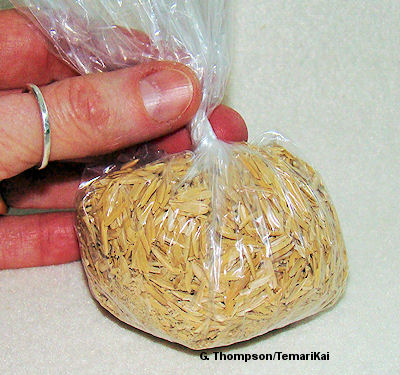 |
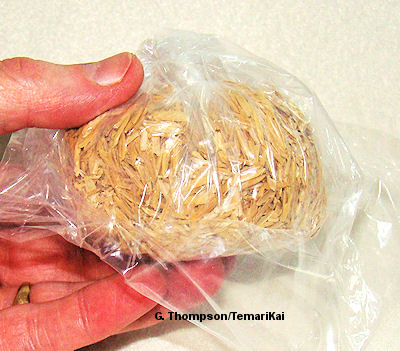 Place 1/2 cup komengara in a small baggie; gently squeeze out the air and twist the bag closed. Fan the extra top of the baggie over the ball. Smooth the excess bag around the packet. This gives a more secure and smoother result than cutting the top off. It will all even off as you begin to wrap. |
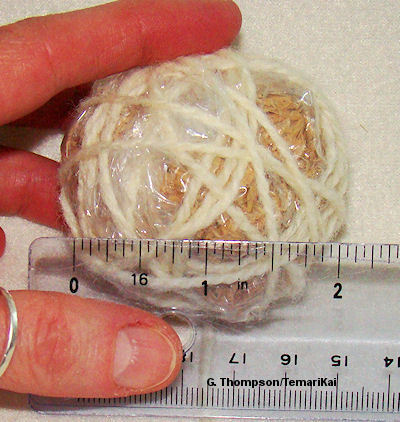 |
Begin wrapping around the packet of rice hulls with
regular/worsted weight yarn. Notice that the starting diameter
is approximately 2 inches; you'll be able to see as the wrapping
progresses about how much is being added to the mari. |
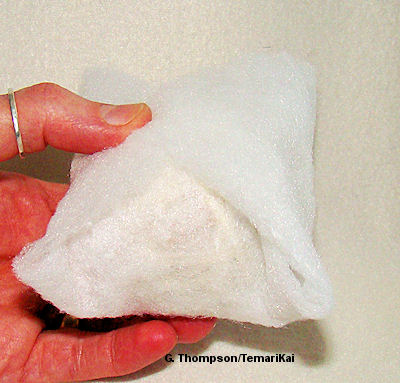 |
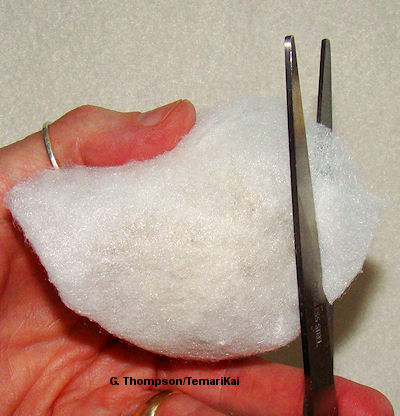 After wrapping enough yarn to hold things roughly together, cut the yarn. Place the ball in the center of a square of low-loft batting. Bring the corners up and overlap on the top. Don't worry about exact fit; just trim off the excess corners a bit (don't go right down to the bag, leave a little bit). |
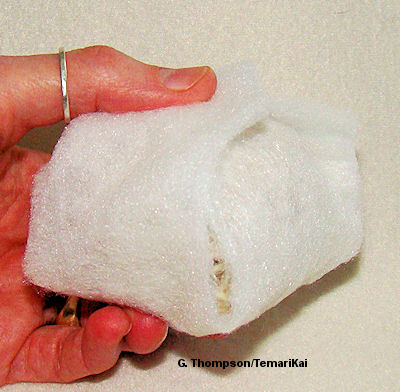 |
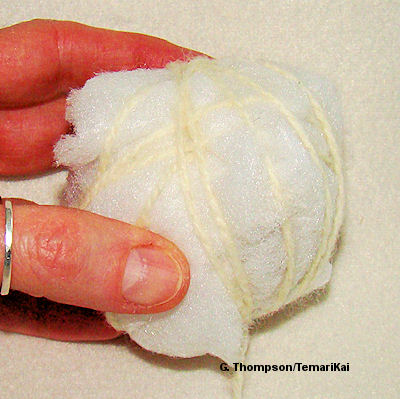 Resume wrapping with the regular weight yarn again, being sure to keep the placement random but always going around the full circumference of the ball. Wrap over and flatten out the batting as you go. Continue to use your hands to mold the ball into round. |
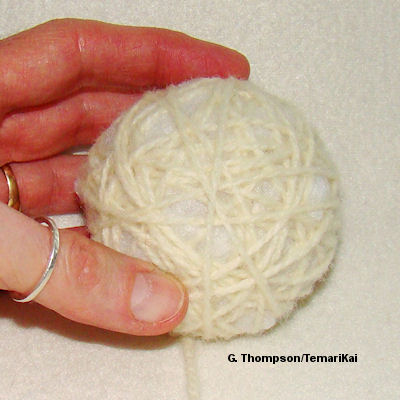 |
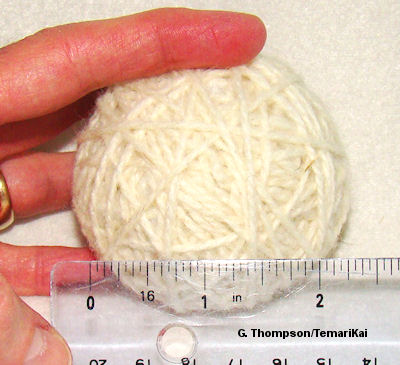 Continue wrapping, striving for consistent tension, and keeping the wraps random. The tension should be enough that lightly handling the ball does not cause them to fall loose, but not so tight that the yarn is showing stress and/or the ball is being skewed. Ideally there should not be 2 wraps laying right next to each other. Continue until the batting layer has been covered. Notice that about 1/4 inch has been added to the diameter overall. |
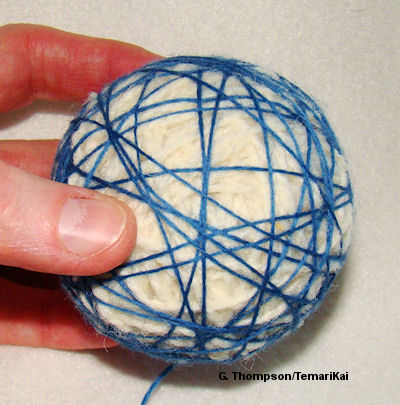 |
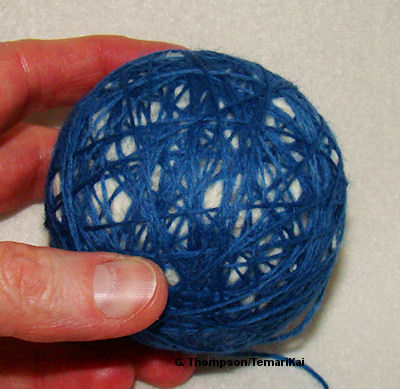 Change to light weight yarn. Begin wrapping again, following the same goals of random wraps, consistent tension. Keep the ball moving as you wrap, and continue to use your hands to mold it into round. |
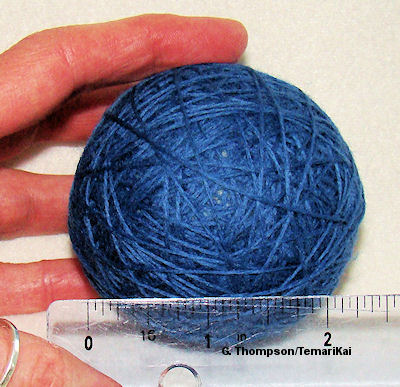 |
Keep wrapping with the light weight yarn until the first yarn
layer is covered. Again, notice that the diameter has not
increased substantially. The major support of the mari should be
the core material, not the wrapping, for a more stable form. |
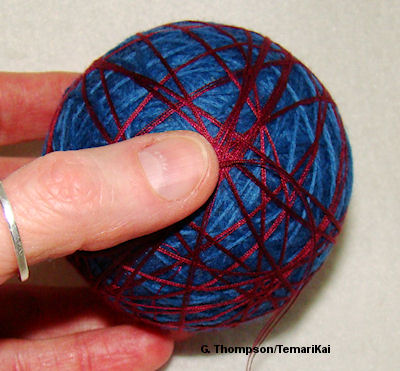 |
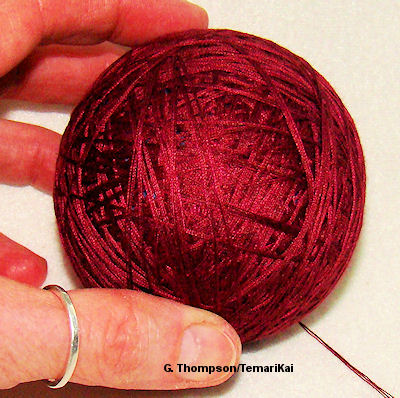 Change to 2 or 3 strands of sewing thread. Using multiple strands is not to hurry the process but rather enhance it. Remember the analogy of filling a bucket with rocks: moving to progressively thinner wrapping materials enhances the smoothness of the outcome. Several strands of thread is a stepping stone between thin yarn and one strand of thread. Wrap with multiple strands until the thin yarn layer is covered. |
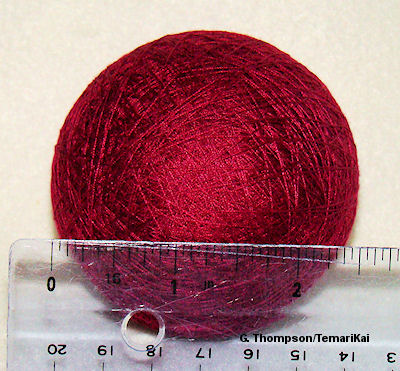 |
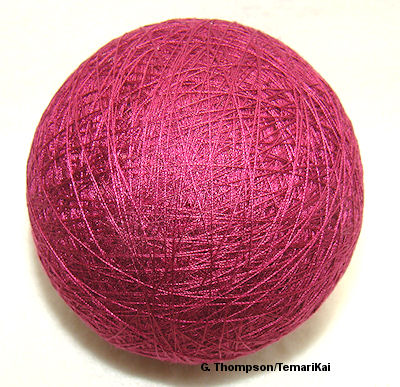 Drop to 1 strand of sewing thread, and wrap another layer that covers the multiple strand layer. When you think you are finished, wrap a bit more. Continue to smooth and mold the ball with your hands (this is very do-able with komengara, not as easy with other core materials). |
| The finished diameter has increased a
little more than 1/2 inch. The average is 1/2 to 3/4 of an inch.
This will give a solid stitching surface as well as a stable
mari. If you need a larger mari, increase the amount of starting
core material in the dodai mari; don't just keep wrapping more
yarn & thread. The final size can be adjust by the amount of
wrapping, but the major size should be accommodated by the core
material for a stable form. This is one example of mari making
and the steps that I follow; there are no absolute hard and fast
rules. However, the goals are standard: a round, stable mari
that provides a stable stitching surface/matrix, with the final
layer being single strand sewing thread. |
|
This is a TemariKai.com Printable Page; © 2014, all rights reserved. Right click to print one copy for personal use.
Last updated 12/2013 © 1998 - 2014 TemariKai.com, G. Thompson/PuffinStuff, Inc.
